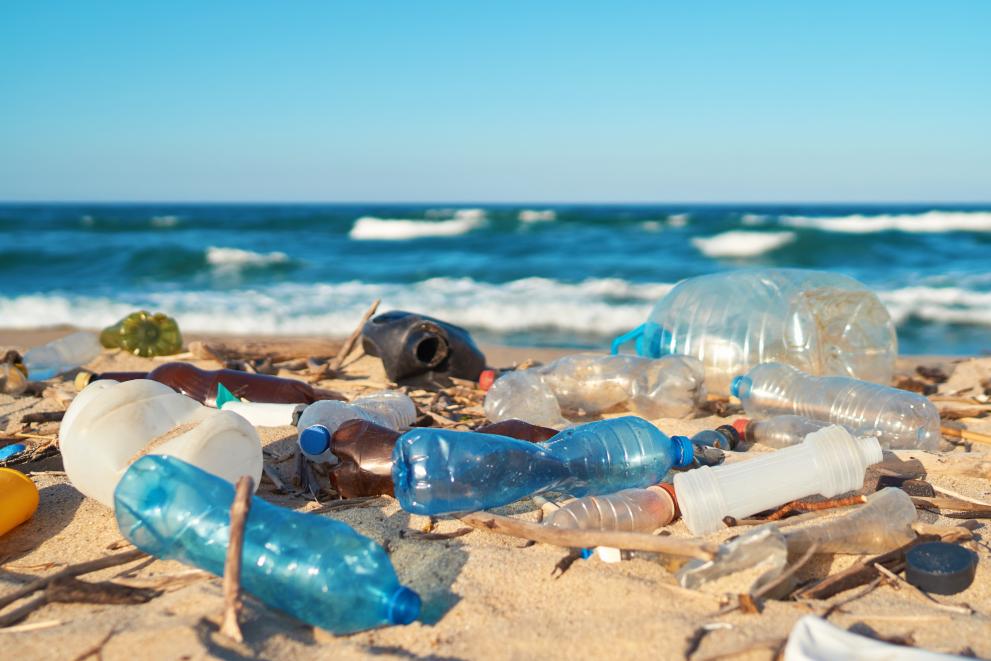
Risks to human health and the environment caused by the widespread use of plastics and resulting plastic pollution are a major concern to both citizens and scientists. However, scientists debate the risks of plastic. Many researchers have identified harmful effects of plastics to humans and the environment, while there is less scientific knowledge about the risks that plastics can entail1.
These debates raise the question: how evidence-based are plastic pollution policies? To find an answer, the researchers behind this new study assessed the knowledge base for six policies in Europe:
- The North-East Atlantic (OSPAR) and Baltic (HELCOM) regional action plans to reduce marine litter.
- The EU’s: Directive amendment regarding lightweight plastics carrier bags; Strategy for Plastics in a Circular Economy; Single Use Plastics Directive; and the European Chemical Agency’s (ECHA) proposal on the restriction of intentionally added microplastics.
- UN’s amendments to Annexes II, VIII and IX to the Basel Convention regarding plastic waste.
The researchers looked for evidence in key policy literature, such as legal documents, strategy descriptions and action plan descriptions, for each initiative. They also examined the policies’ web pages and databases.
They looked specifically for evidence that complies with the EU’s Better Regulation toolbox’s principles. These say that evidence is reliable if it is based on: ’the appropriate method to collect, interpret, process and transform data and information’.
The researchers concluded that the policies are backed by science. The evidence bases are constructed from scientific articles and reports prepared by experts. These include studies on plastic sources, ecological impacts and consumption patterns.
Four of the six policies include marine-litter monitoring data in their evidence base. This form of data appears to be a major scientific driver of actions to combat plastic pollution. Scientific tools that shaped the policies include risk assessment, impact assessment and life-cycle assessment.
The policy documents mostly recognise the large uncertainties around the effects of plastic pollution on health and the environment, say the researchers. In these cases, the policies justify precautionary actions that reflect the precautionary principle. Several of the policies mention this core principle of European environmental regulation, which aims to ensure a high level of environmental protection through preventative decisions in the face of risk2.
Owing to the uncertainties, the researchers say that policies must be flexible and adjust to new scientific knowledge. Equally, scientists must provide the right research for policy. While researchers commonly focus on end-of-life plastics, the study emphasises that to build the best foundations for policies, policymakers need evidence from all the stages of plastic’s life cycle.
Footnotes:
- For more information see: Science Advice for Policy by European Academics (SAPEA) (2019) A scientific perspective on micro-plastics in nature and society. [Accessed 31 July 2023]
- In practice, the scope of the precautionary principle is broad and also covers consumer policy, European Union (EU) legislation concerning food and human, animal and plant health. See: https://eur-lex.europa.eu/legal-content/EN/TXT/?uri=celex%3A52000DC0001 [Accessed 4 September 2023]
Source:
Nielsen, M.B., Clausen, L.P.W., Cronin, R., Hansen, S.F., Oturine, N.G., and Syberg, K. (2023) Unfolding the science behind policy initiatives targeting plastic pollution. Microplastics and Nanoplastics, 3: 3. Available from: DOI: 10.1186/s43591-022-00046-y
To cite this article/service:
“Science for Environment Policy”: European Commission DG Environment News Alert Service, edited by the Science Communication Unit, The University of the West of England, Bristol.
Notes on content:
The contents and views included in Science for Environment Policy are based on independent, peer reviewed research and do not necessarily reflect the position of the European Commission. Please note that this article is a summary of only one study. Other studies may come to other conclusions.
Details
- Publication date
- 13 September 2023
- Author
- Directorate-General for Environment

